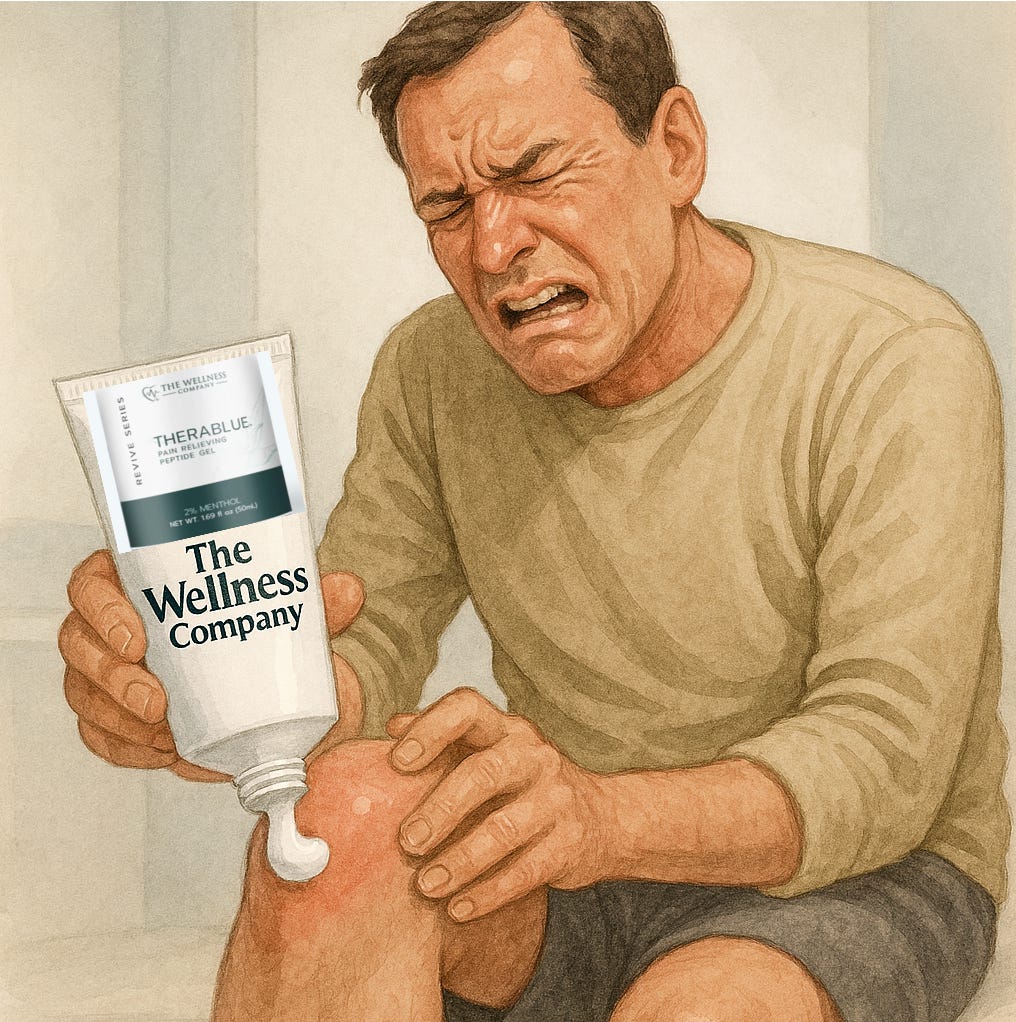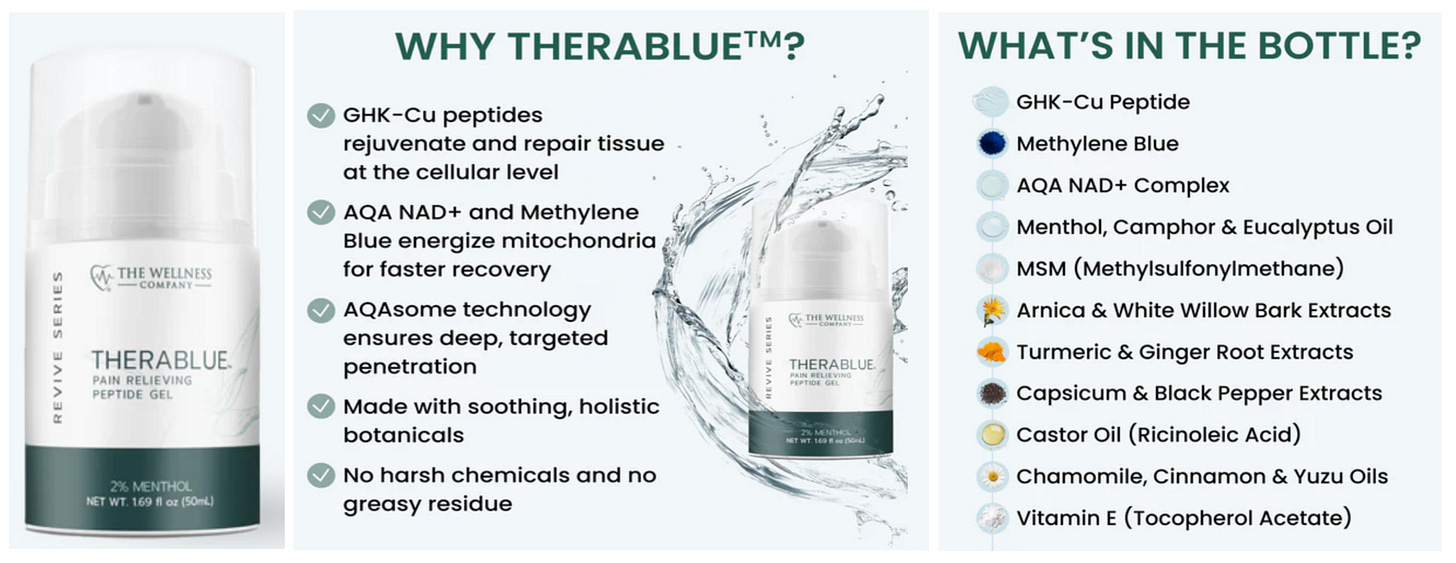BREAKING--The Wellness Company Introduces THERABLUE™
First topical cream for deep tissue pain with analgesics and peptides to promote healing
By Peter A. McCullough, MD, MPH
The United States topical pain relief product market focuses on over-the-counter (OTC) and prescription formulations like creams, gels, patches, sprays, and lotions for localized management of conditions such as arthritis, muscle/joint pain, sports injuries, back pain, and neuropathic issues. In 2024, the market was valued at approximately USD 3.3 billion, with projections to reach USD 4.5-5 billion by 2032, growing at a compound annual growth rate of 4.67% to 8.6%.
The most commonly used ingredients are:
Menthol - A counterirritant that provides a cooling sensation to distract from pain; found in many creams and gels.
Camphor - Creates a warming or cooling effect as a counterirritant, often combined with menthol for muscle and joint relief.
Capsaicin - Derived from chili peppers, it desensitizes nerves over time for relief from joint and neuropathic pain.
Methyl Salicylate - A salicylate similar to aspirin, absorbed through the skin to reduce inflammation and pain in joints.
Lidocaine - A local anesthetic that numbs the area to block pain signals; common in patches and gels.
Diclofenac - An NSAID that inhibits enzymes causing inflammation; available in OTC gels like Voltaren for targeted relief.
Arnica - A herbal extract with anti-inflammatory properties, often used for bruising and muscle soreness.
Cannabidiol (CBD) - A non-psychoactive cannabis compound that may reduce inflammation and pain; growing in popularity for natural options.
MSM (Methylsulfonylmethane) - An organic sulfur compound that supports joint health and reduces inflammation.
Trolamine Salicylate - A salicylate that provides mild pain relief by blocking pain enzymes; used in creams for superficial joints.
Key segments include therapeutic class, where non-opioids dominate with about 78% share (e.g., NSAIDs, capsaicin, lidocaine), while opioids (Fentanyl patch) hold a smaller portion. By type, OTC products lead at 61%, favored for accessibility. Formulations are led by creams (52%), followed by gels and patches. Drivers encompass rising arthritis cases (59 million U.S. adults), an expanding geriatric population (projected to 80.8 million by 2040), opioid crisis pushing non-opioid preferences, and sports-related injuries. Trends highlight technological advancements like transdermal delivery and nanotechnology, natural/organic formulations, FDA OTC approvals (e.g., Voltaren in 2020), and e-commerce expansion.
The major advantages are the accessibility of these products and the lack of systemic side effects. Limitations include involve side effects like skin irritation and odors, but opportunities lie in personalized medicine and emerging markets. Overall, the market is set for steady expansion amid demographic shifts and consumer demand for safe, targeted relief.
None of the available products before THERABLUE™ work to heal the underlying problem which is commonly deep tissue injury and arthritis where there is a breakdown of collagen, fibrillin, and other structural proteins. That was the opportunity for innovation at the The Wellness Company with the introduction of THERABLUE™. This topical cream combines eleven ingredients to promote deep tissue (muscle, connective tissue, chondrocytes) repair, reduce inflammation, and while doing so reduce pain.
So if you have been struggling with musculoskeletal pain, give THERABLUE™ a try with applications 3 to 4 times per day and be sure you wash your hands afterwards because the product contains bioactive peptides.
Please subscribe to FOCAL POINTS as a paying ($5 monthly) or founder member so we can continue to bring you the truth.
Peter A. McCullough, MD, MPH
Chief Scientific Officer, The Wellness Company
www.twc.health/courage





Looking for pain relief for a friend with CRPS. I doubt this will help with nerve injury but asking…..???
Can you use it on your jaw joint?